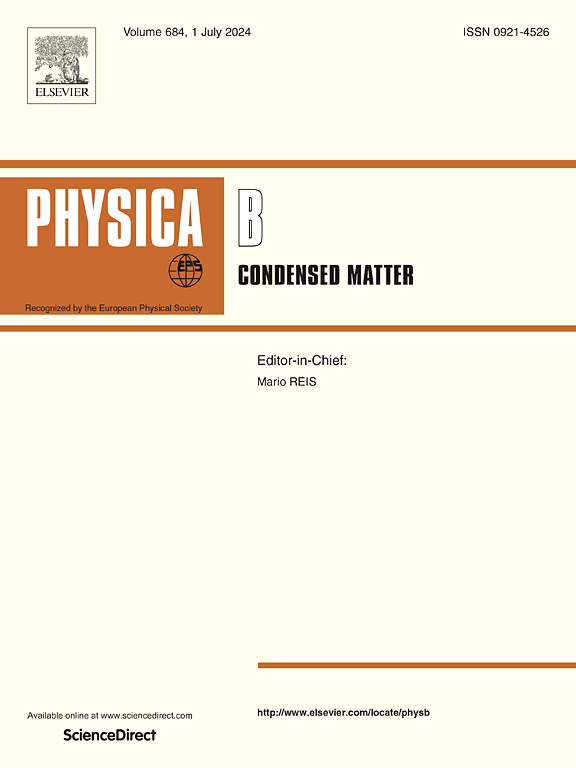Oleic acid-ligated Co0.7 doped Ca0.3Fe2O4 nanoparticles: A synergistic approach for enhanced wastewater purification and magnetic hyperthermia applications
IF 2.8
3区 物理与天体物理
Q2 PHYSICS, CONDENSED MATTER
引用次数: 0
Abstract
Magnetic nanoparticles have garnered considerable interest due to their multifunctional capabilities in various applications. This study focuses on the synthesis of oleic acid-anchored Co0.7Ca0.3Fe2O4 spinel nanoferrites, which were synthesized by the thermal decomposition of metal acetylacetonates in octadecene using oleic acid and oleylamine as surfactants. These nanoparticles exhibit a well-crystallized structures, narrow size distribution, and biocompatibility. The photocatalytic properties of the nanoparticles were evaluated through the degradation of the anionic Orange II and the cationic methylene blue (MB) dyes under UV light. Significant degradation efficiencies were observed; Orange II showed 92.4 % degradation within 60 min, whereas MB achieved 89.8 % over 300 min. Additionally, the specific absorption rate (SAR) of the magnetic fluids was determined via adiabatic calorimetry under varying magnetic fields and concentrations, revealing a maximum SAR of 418 W/g at a concentration of 3 mg/mL and a magnetic field of 475 Oe.
油酸掺杂的 Co0.7 Ca0.3Fe2O4 纳米粒子:增强废水净化和磁热效应应用的协同方法
本文章由计算机程序翻译,如有差异,请以英文原文为准。
求助全文
约1分钟内获得全文
求助全文
来源期刊

Physica B-condensed Matter
物理-物理:凝聚态物理
CiteScore
4.90
自引率
7.10%
发文量
703
审稿时长
44 days
期刊介绍:
Physica B: Condensed Matter comprises all condensed matter and material physics that involve theoretical, computational and experimental work.
Papers should contain further developments and a proper discussion on the physics of experimental or theoretical results in one of the following areas:
-Magnetism
-Materials physics
-Nanostructures and nanomaterials
-Optics and optical materials
-Quantum materials
-Semiconductors
-Strongly correlated systems
-Superconductivity
-Surfaces and interfaces
 求助内容:
求助内容: 应助结果提醒方式:
应助结果提醒方式:


